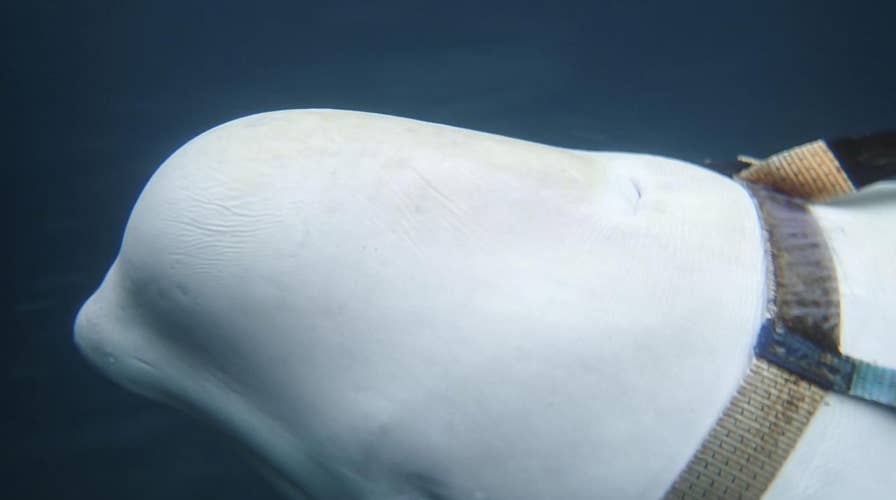Experts say white beluga whales are potentially being used as Russian military ‘spies’
Experts say white beluga whales are potentially being used as Russian military ‘spies.’ It comes after Norwegian officials spotted a whale wearing a tight harness that appeared to be Russian made.
Russia’s military may have an unusual new recruit – a white beluga whale that has been spotted in the waters of the Norwegian Arctic.
The whale was wearing a tight harness that appears to be Russian made, sparking concern from Norwegian officials and prompting speculation that the animal may have escaped from a Russian military facility.
In a tweet, the Norwegian Directorate of Fisheries explained that officials worked with a local fisherman to take the harness off the whale’s body. Joergen Ree Wiig of the Directorate says "Equipment St. Petersburg" is written on the harness strap, which features a mount for an action camera.
NAVY DOLPHIN FINDS 130-YEAR-OLD TORPEDO
Fishermen in Arctic Norway reported the tame white cetacean with a tight harness swimming around last week, Ree Wiig said Monday. On Friday, fisherman Joar Hesten, aided by Ree Wiig, jumped into the frigid water to remove the harness.
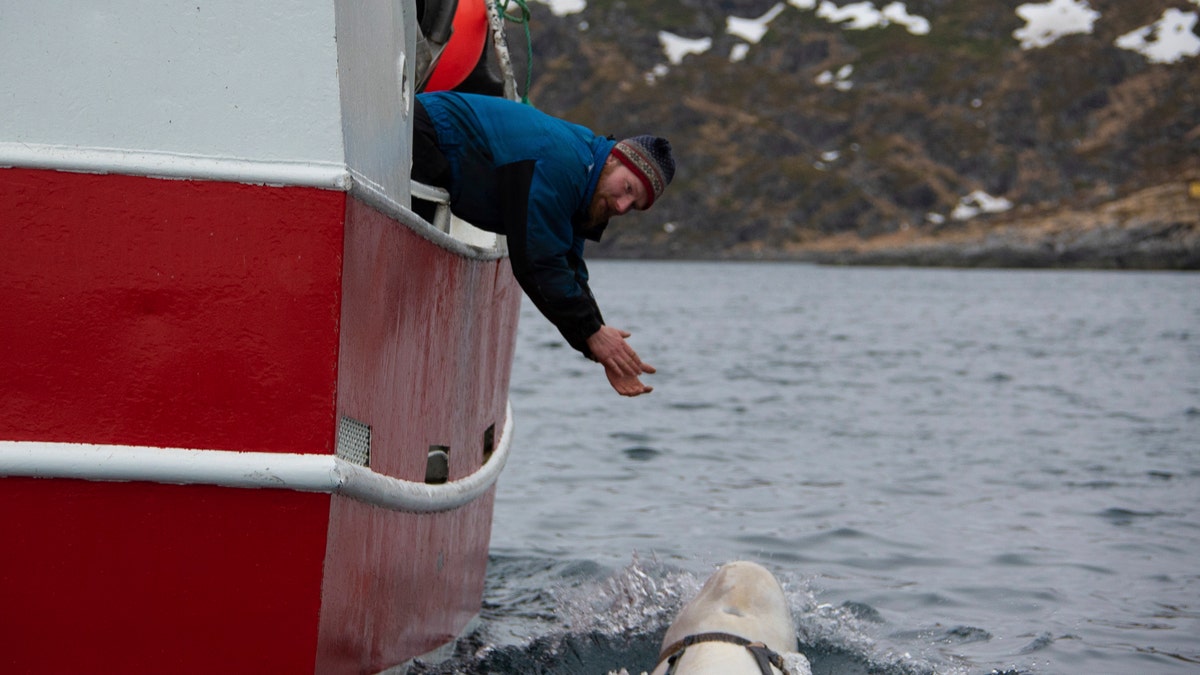
Norwegian fisherman Joar Hesten tries to attract a beluga whale swimming next to his boat before the Norwegian fishermen were able to remove the tight harness, off the northern Norwegian coast Friday, April 26, 2019. (Joergen Ree Wiig/Norwegian Directorate of Fisheries Sea Surveillance Unit via AP)
Ree Wiig said "people in Norway's military have shown great interest" in the harness.
Both Russia and the U.S. have trained marine mammals for military use. The U.S. Navy Marine Mammal Program, for example, “trains bottlenose dolphins and California sea lions to detect, locate, mark and recover objects in harbors, coastal areas, and at depth in the open sea.”
RUSSIA LAUNCHES HUGE 'DOOMSDAY' SUPERSUB
In 2013, a U.S. Navy dolphin found a 130-year-old torpedo off the coast of San Diego, according to LiveScience.

A beluga whale is seen as it swims next to a fishing boat before Norwegian fishermen removed the tight harness, swimming off the northern Norwegian coast Friday, April 26, 2019. (Joergen Ree Wiig/Norwegian Directorate of Fisheries Sea Surveillance Unit via AP)
Citing a 2017 report by TV Zvezda, which is owned the Russian defense ministry, the Guardian reports that Russia’s military has been training beluga whales, seals and bottlenose dolphins in Arctic waters.
Audun Rikardsen, a professor at the Department of Arctic and Marine Biology at the Arctic University of Norway in Tromsoe, northern Norway, believes "it is most likely that Russian Navy in Murmansk" is involved. Russia has major military facilities in and around Murmansk on the Kola Peninsula, in the far northwest of Russia.
COULD AN 'INSANE' RUSSIAN NUCLEAR TORPEDO CAUSE 300-FOOT TIDAL WAVES?
Fox News has reached out to the Russian government with a request for comment.
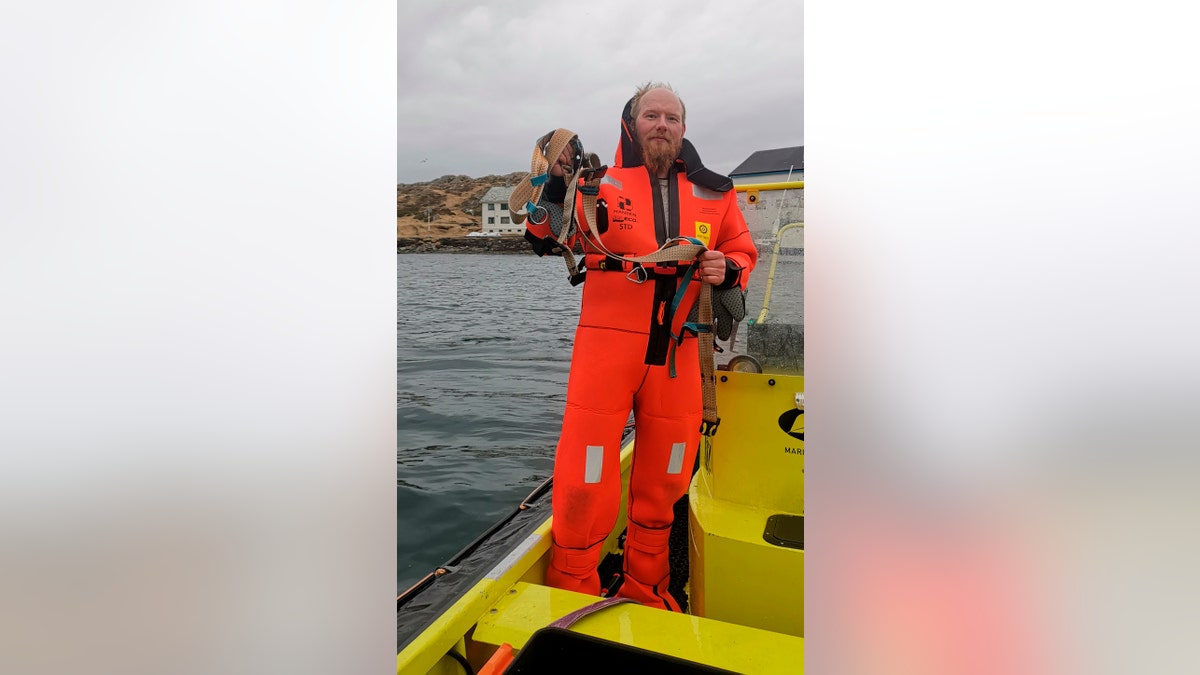
Norwegian Joergen Ree Wiig holds the whale harness after it was removed from a beluga whale off the northern Norwegian coast Friday, April 26, 2019. (Joergen Ree Wiig/Norwegian Directorate of Fisheries Sea Surveillance Unit via AP)
Rikardsen said he had checked with scholars in Russia and Norway and said they have not reported any program or experiments using beluga whales.
"This is a tame animal that is used to get food served so that is why it has made contacts with the fishermen," he said. "The question is now whether it can survive by finding food by itself. We have seen cases where other whales that have been in Russian captivity doing fine."
CHILLING WORLD WAR III 'WARGAMES' SHOW US FORCES CRUSHED BY RUSSIA AND CHINA
Hesten told Norwegian broadcaster NRK that the whale began to rub itself against his boat when he first spotted it.
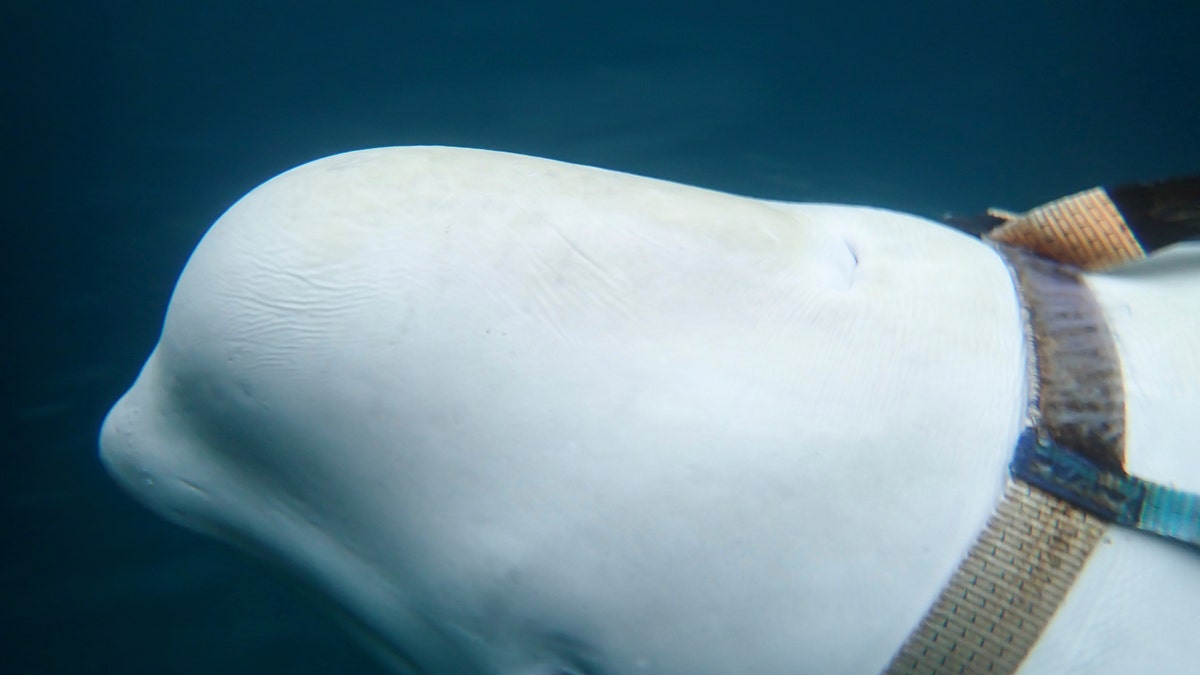
A beluga whale is seen as it swims next to a fishing boat before Norwegian fishermen removed the tight harness, swimming off the northern Norwegian coast Friday, April 26, 2019. (Joergen Ree Wiig/Norwegian Directorate of Fisheries Sea Surveillance Unit via AP)
Defense expert H.I. Sutton tweeted that the whale may have been trained to operate under the Arctic ice cap.
In a blog post, H.I. Sutton notes that, after the fall of the Soviet Union, the Russian Navy's main dolphin unit at Kazachya Bukhta, near Sevastopol in Crimea found itself in the newly independent Ukraine and became part of the Ukrainian Navy. “Like many units it lapsed into non-operational status and was used as a tourist attraction,” the analyst explains. “More recently it was re-established as an operational unit, but then captured by Russia during the annexation of Crimea in 2014.”
US UNABLE TO DEFEND AGAINST RUSSIAN AND CHINESE HYPERSONIC WEAPONS, REPORT WARNS
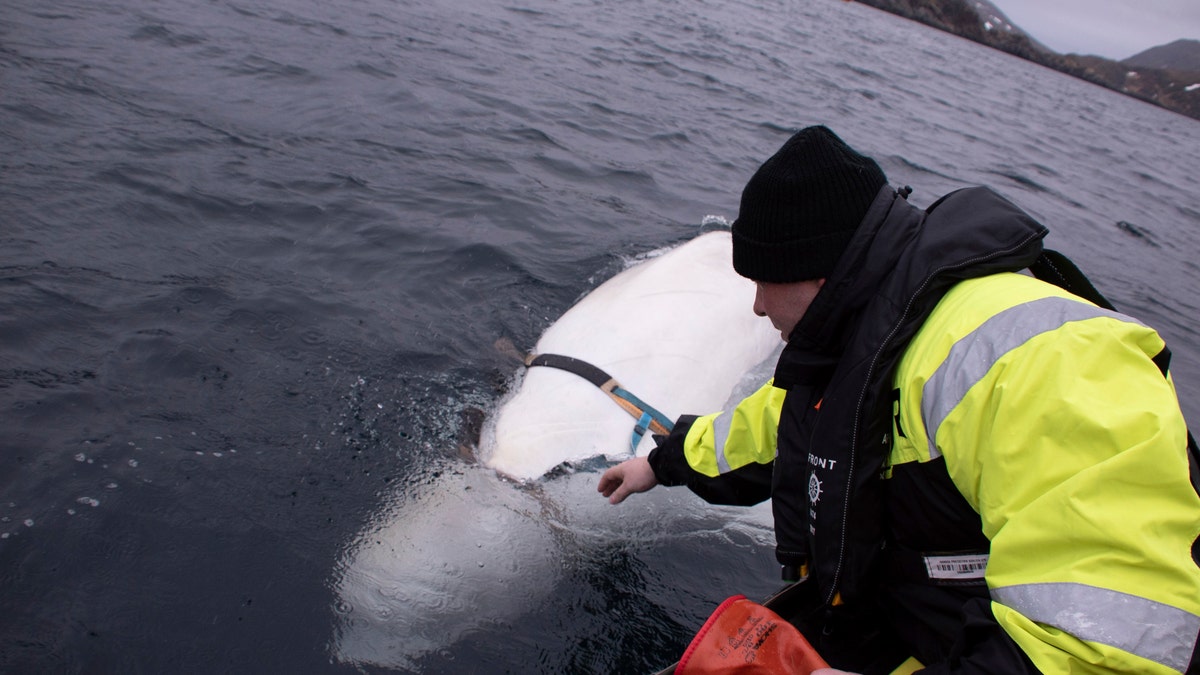
Joergen Ree Wiig tries to reach the harness attached to a beluga whale before the Norwegian fishermen were able to remove the tight harness, off the northern Norwegian coast Friday, April 26, 2019. (Joergen Ree Wiig/Norwegian Directorate of Fisheries Sea Surveillance Unit via AP)
The U.S. Navy has trained dolphins and sea lions to support its operations since 1959. “In the early years of the program, more than a dozen different species of marine mammals, as well as sharks, rays, sea turtles, and marine birds were tested, and their sensory and physical capabilities explores,” it explains, on its website. The Navy decided to use bottlenose dolphins and California sea lions, citing their “trainability and adaptability to a wide range of marine environments.”
CLICK HERE TO GET THE FOX NEWS APP
Russia recently made a high-profile addition to its conventional military arsenal when it launched its new Belgorod submarine, which is designed to carry devastating underwater nuclear drones.
The Associated Press contributed to this article. Follow James Rogers on Twitter @jamesjrogers
